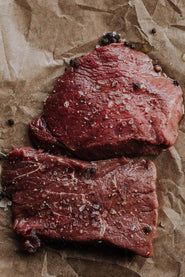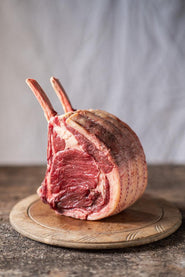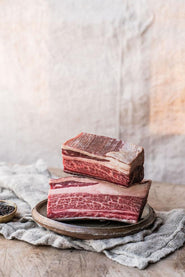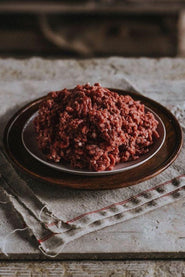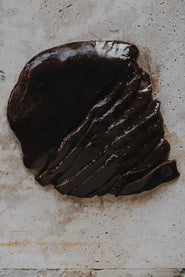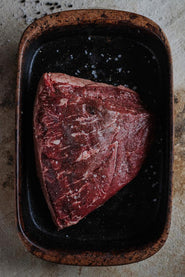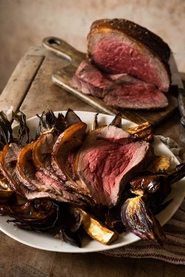Only 3% of Britains wildflower meadows are still in place. Most have been ploughed up and turned into intensive farmland or to make way for housing developments. This dramatic change of land usage has destroyed immensely complex ecosystems and great swathes of botanical biodiversity. In a world where the effects of climate change are becoming more and more prevalent increasing the amount and quality of our species-rich grassland is vital.
Wildflower meadows are an ancient habitat. They are a cornerstone in regenerative agriculture as they help prevent floods and store carbon. Meadows provide a vital home for pollinators that help us to produce healthy, sustainable food.
Wildflowers, plants and fungi are the life support for all our wildlife and their colour and character light up our rural landscapes. But without help, this priceless natural heritage is in danger of being lost. We need to encourage more landowners to identify, manage, restore and recreate meadows and species-rich grassland.
Thankfully, charity Plantlife is leading the campaign to restore our meadows.
Natural Road Verges
Over 700 species of wildflower grow on the UK’s road verges – nearly 45% of our total flora. And where wildflowers lead, wildlife follows… a multitude of bees, butterflies, birds and bugs.
However, our road verges are under considerable pressure. Priorities for safety and access, alongside budget constraints, a desire for ‘neatness’ and difficulties with the collection of litter and grass clippings all mean that enhancing their wildlife value is often low on the list of local councils and landowners.
You can encourage your local council to better manage roadside verges 'cut less, cut later' by signing the petition.
Wild Hedgerows
The traditional meadow is a rarity now in the UK, however it is encouraging to see the many hedgerows that are untreated with pesticides and fertilisers, become a haven for flora and fauna. At this time of year you'll find them tangled with an array of wildflowers, some that are incredibly useful.
Each plant has its unique method of attracting pollinators or distributing its seed. Many still jog the memory with some special attribute lingering from an ancient past when all flowers conveyed a message.

Wildflowers at Pipers Farm
Farming with nature means that we believe in the symbiotic relationship of every plant and insect that calls our farm its home. Wildflowers are an important part of the health and success of our farm, providing food and shelter to create a diverse ecosystem, that in turn keeps our livestock healthy.
Our small fields are flanked by deep Devon hedgerows, in some many cases the hedges are over 400 years old and contain hundreds of botanical species.
Since we moved into the farm thirty years ago we have been nurturing our hedgerows, restoring the fields to their traditional size and form. This has meant the building of new wildflower hedges to join up with the surviving ancient banks. It has given us the opportunity to encourage pollinating plants to take hold, and this year we have been treated to the most impressive display yet (see our short video below).
As we rear our livestock using a 100% grass-fed system, growing species-rich grassland is important nourishment for our ruminant animals. We take just one cut of hay or silage a year, never pushing our wildflower-rich pasture hard.
With a focus on creating more biodiversity through using ‘herbal leys’ as part of our grazing systems. Our are fields purposely sown with a mixture of grass species, herbs and legumes, these largely native plants are used to improve both soil structure and the nutritional quality of the sward and often result in a beautiful display of colours, perfect for pollinators. You can read more about our species-rich grassland.
Wildflowers to look out for
Queen Anne's Lace
Also known as wild carrot. A bountiful umbellifer that is a fantastic food source for insect life. You'll see often see the laced head of flowers abuzz with smaller wasps and flies gratefully guzzling its nectar. It's one of the most abundant species in the hedgerow. Queen Anne's Lace isn't edible but it does make a beautiful wildflower window posy.
Mallow
Some plants seem to be our constant companions, no matter where we live. Rather than being looked upon as a weed, the mallows can be more usefully described as some of our gloriously abundant plant helpers. A number of mallow species have long been used as a food and medicine. Mallow leaves can be a substitute for spinach in many dishes, including soups, salads and gnocchi. Mallow leaves can provide useful amounts of iron, as well as being quite high in zinc and most vitamins.

Meadowsweet
This rose full of frothy buds can be found stretching for miles along footpaths and hedgerows. It has a distinctive perfume like an earthy, nutty, Elderflower. Historically Meadowsweet was used for medicinal purposes, anything from a cure for headaches or an antiseptic for cuts and scrapes. It is completely edible, best picked and eaten when the flowers are new.
Chicory
Common chicory, is a somewhat woody, perennial herbaceous plant of the dandelion family, usually found with bright blue flowers. Many varieties are cultivated for salad leaves, or roots which are baked, ground, and used as a coffee substitute. You'll find its bright blue flowers on roadside verges through the Summer months.
Cornflower
In the past Cornflowers grew abundantly as a weed in cornfields, hence its name. It is now endangered in its native habitat due to agricultural intensification, particularly over-use of herbicides. If you do stumble upon them leave them be, they are fabulous food for insect life and we are lucky to have plenty of other options to pick. You can cultivate Cornflowers at home to use for all your culinary purposes, including jollying up a salad or for brewing a calming tea.

Foxgloves
Along with hedgerows you will find foxgloves in abundance where woodland has been. The tall flowers will spring up in pockets of sunshine amongst shady woodland. Foxgloves are adapted to be pollinated by bees, especially long-tongued bees such as the common carder bee. The plant’s brightly coloured flowers and dark spotted lip attracts the bees, and the lower lip of the flower means that the insect is able to land before climbing up the tube. During this process the bee will dislodge pollen and then transfer it to another plant. Foxgloves are not edible and often unsuitable to use as cut flowers, they are best admired where they sit.
Poppy
Poppies are not a native plant and so are often found in fairly random locations; hedgerows, gardens or even the middle of a field. Although the poppy has had a chequered history, its presence in the Summer months is welcomed. Poppies make excellent cut flowers (cut the flower near the base of the stem when the flower is mature but is yet to lose its seeds) remember to be kind and not to clear an area. Poppy seeds can be used for an array of culinary delights, and are always best when toasted.

Choosing to support farmers who are growing food in harmony with nature is vital to the success of our countryside and the billions of wildlife who thrive or survive within.
Shop our range of sustainable and ethical meat.

